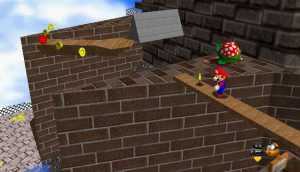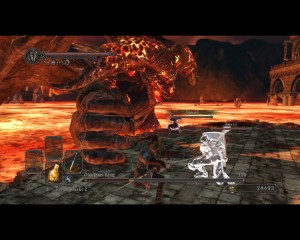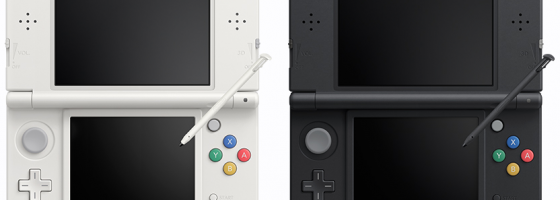For those of you that missed the announcement, Nintendo is working on a new 3DS titled “The new 3DS.” Besides hardware improvements, the big addition to the system would be an analog nub allowing for dual stick controls on the system without the need of the circle pad pro.
Younger gamers may not see this as a big deal having grown up playing games in the 00s, but this dual setup is a very important feature for how games have changed over the years.
Two Handed History:
Looking back at the 90s, there were two points where we could say that the dual stick control scheme was first popularized. Super Mario 64 was Nintendo’s first 3D title and was built around the new N64 controller which had the C-Stick. The C-Stick at the time was okay, but it was made out of a different material than the analog stick and didn’t have the full functionality.
The second time that the dual stick system became a big deal was with the Sony exclusive series Ape Escape. In 1999 it became the first game ever to require the use of a dual analog stick controller which Sony dubbed the “Dual Shock.” Interestingly, Ape Escape did not use the second stick in the same way that Mario and other 3D games did by using it as camera control. Ape Escape tied all the attack commands to the stick and used the shoulder buttons for camera control.

Mario 64 was one of the first 3D games to make use of a second control stick for camera controls, but the C-stick functionality was limited.
That is an important detail to keep in mind as it represents the big shift between 2D and 3D and why this analog stick became so important for game design.
The Three Necessary Controls:
When the Game Industry shifted from 2D to 3D, new considerations had to be taken when developing games due to the extra dimension. Previously in 2D, one control stick or D-Pad was all you needed as all movement was tied to it with the remaining actions associated to the buttons.
But 3D adds the wrinkle of camera controls to the mix. Great games like Mario 64 featured a smart camera that was able to track the player reasonably well, but you still needed to give the player some control when they need it. Without it, sections become harder than they should and it requires more work by the designer to set up all the perfect camera angles.
What happened was that the types of controls or commands a player needed to learn grew into three groups: Movement, Action/Combat and Camera Controls. Each set of commands needed a part of the controller assigned to it to work properly and combining parts led to clunky controls.
For instance when a developer only has camera controls associated to buttons just like actions were. The other problem goes back to hand positioning and how despite having ten fingers, only a few of those are actually in a position to interact with the controller. In my post talking about control schemes, I examined why splitting commands between hands or parts of the controller was important for associating them better.
As a quick aside, the added group of controls to learn is another reason why 2D games still are popular today both from a design and consumer point of view as you don’t need to worry about the camera to the same degree as with a 3D title.
Having this split of commands is why the keyboard and mouse was so popular for action games and what made the dual stick system rise in popularity for 3D titles.
Splitting Commands:
The reason why the keyboard and mouse combo was so popular for First Person Shooters was that it split the three groups of commands between your hands.
Your left hand which was on the keyboard handled movement (WSAD controls) while your right hand controlled both action and the camera via the mouse. Because the camera is intertwined with combat, the association of the two into one hand is easier compared to having them tied to movement.

A second analog stick makes 3D camera controls a lot easier and in the process makes the gamepad the superior option for those games.
And this type of association also became popular on the consoles with gamepads. If you notice, most action titles associate attacking to whatever buttons that the right hand can reach easily as that’s the hand that is on the analog stick that controls the camera.
Comparing FPS titles to third person, a mouse is superior for the FPS compared to a second stick, but the second stick is better for third person games. The reason has to do with the input format and how the mouse is a 1 to 1 relation — I move the mouse and the camera instantly adjusts exactly the way I moved it.
When you’re playing a FPS, you need that 1 to 1 movement in order to make minute changes to the camera/ targeting reticule in order to effectively shoot enemies. The analog stick is not a 1 to 1 relation and is more about gross control than fine. When you push the stick, it takes all the pressure you put on the stick into account and makes it hard to make fine adjustments.
However when you are operating a 3D camera and need to be able to quickly shift the perspective to keep up with enemies, a mouse doesn’t work as well. A 1 to 1 relation makes the camera swinging feel awkward and a lot harder to keep up with larger enemies or those that are moving quickly. The gross movements of the analog stick are favored for this reason and why so few action titles have been ported to the PC up until recently.
We are seeing gamepads become popular for the PC thanks to the integration Microsoft does with the Xbox controllers and more and more developers are making use of it such as Super Meat Boy, Dark Souls 2 and any number of action titles ported to the PC.
Two Hands are better than one:
Dual Stick functionality and adoption have been two of the big revisions of gamepad design over the last decade and have become standard for both developers and consumers alike to make use of. The control and functionality they offer are the only reasons why 3D titles have been able to work as well as they do and I’m interested in seeing how this will turn out for the New 3DS.
I just wish that they came up with the idea first before the 3D as my enjoyment of Kid Icarus Uprising would have been a lot better with it.


